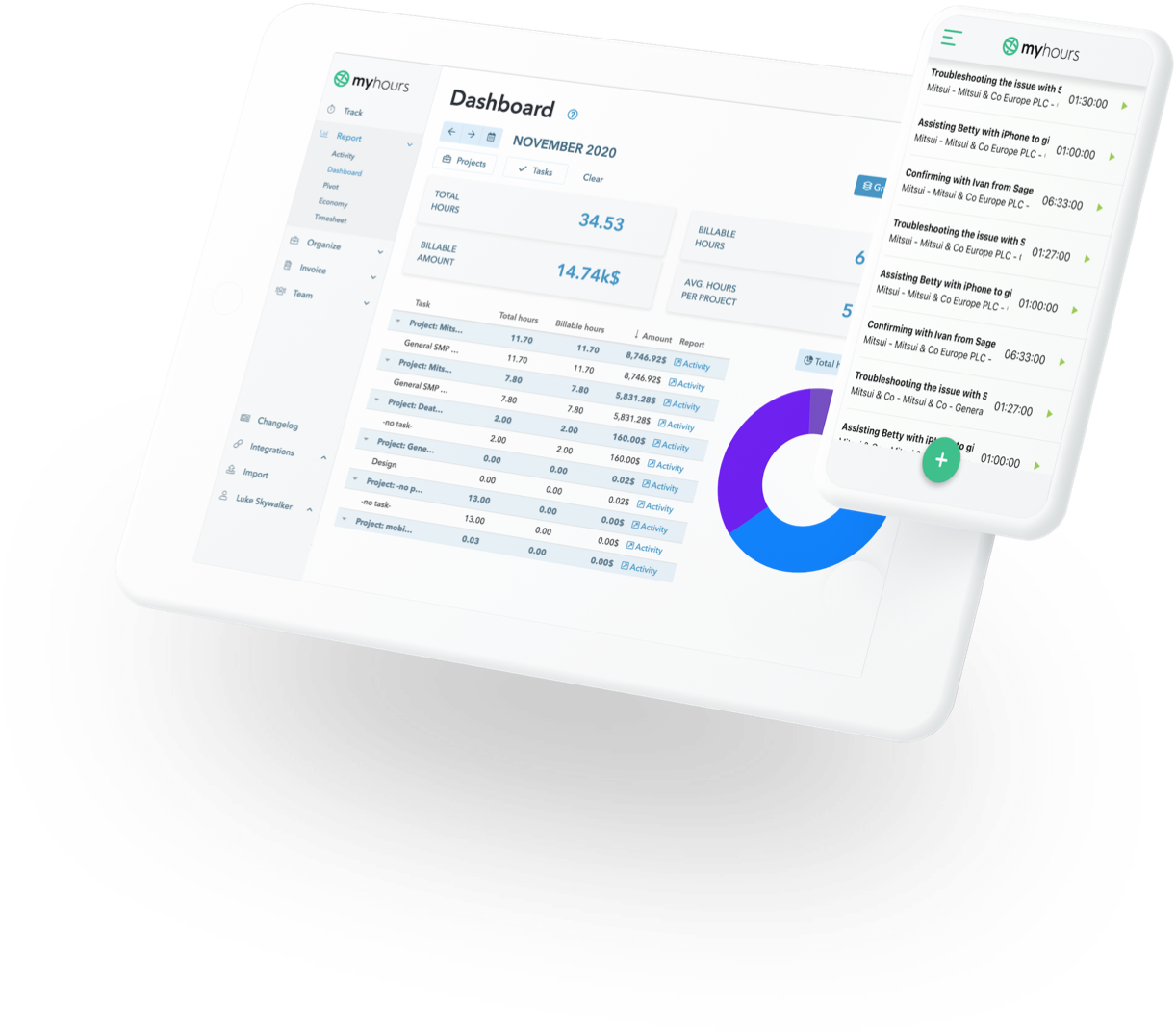Timing is everything: How to hit the right timing

It’s all about being in the right place at the right time. It’s all about having a good intuition for when the time is ripe to make a move. It’s all about timing. Timing is everything.
The right timing is a crucial aspect of business which allows you to achieve more in a shorter period of time due to a reduction in friction. Thus, timing is an important aspect of productivity and time management.
That being said, there’s good and bad news in this regard. The bad news is that it’s usually really hard to hit the right timing.
But the good news is that you are more or less the one controlling it.
You are the one taking the action, so minding timing in your agency can make a great contribution towards achieving more with less effort. With practice and being aware of the timing, you can get a lot better at it.
In this blog post, we’ll dive into how to hit the perfect timing.
- Since timing is everything, here is how to hit the right timing
- 1. Waiting for, or creating, the right context
- 2. Directly reducing friction
- 3. Staying flexible and aligning your goals with the environment
- 4. Accumulate more resources before you make a move
- 5. Trends and paradigms
- How do you know if your timing is bad?
- 1. Acting without thinking (and considering the timing)
- 2. Faking it in the hopes of making it
- 3. Doing things based on the wrong assumptions
- 4. Bad effort-risk-reward ratio
- Timing is everything, so start calculating it into your moves
What is the main idea behind the “timing is everything” concept?
The forces in your business environment can either support the achievement of a goal, block it, or have no effect on it at all (neutral effect).
They may be clearly visible, or they could be hidden, or at least very well disguised. However they manifest themselves, these forces are at the center of the concept “timing is everything”.
For example, if you want to start your own business and your spouse supports you, the chosen market is growing fast, you have access to capital and you already have a team of people in place, these are all backing forces. These are favorable circumstances.
Your best friend convincing you that starting your own business is risky, a health issue that you currently have, or fierce competition are all blockers and obstacles on the way towards achieving your goals, and attribute to bad timing. These are not favorable circumstances.
For every goal you want to achieve, naturally, effort from your side is needed first. If you want to move an object from one place to another, you have to put some effort in. But besides the natural effort needed, there are additional outside forces that make the moving of that object easier or harder, as we have seen.
There are also always backers and blockers. Blockers usually demand additional energy investments to achieve a specific goal, besides the aforementioned natural effort. They are the ones messing with your good timing.
The hidden or visible forces in your environment in relation to your goals are:
- Backers – People and forces (market trends, tech trends etc.) supporting your goal
- Blockers – People and all the different forces working against your goal
- Neutrals – People and various forces that don’t affect you (but can quickly be turned into backers or blockers)
Regarding these forces, there are a few simple rules. First, you’ll want to make sure that the blockers aren’t too strong. Neutrals can also very quickly turn into backers or blockers, so if needed, you’ll want to convert as many neutrals into backers as possible.
For many of the neutrals to step over to your side, all that is needed is a little push or an honest talk. At the same time, you also want to make sure you aren’t creating new unnecessary enemies.
The best things happen at the right time for the right reason.
Of course, the timing is rarely perfect. Waiting for the perfect timing might be an excuse for not taking action at all. And you might still win, even if the circumstances are not favorable. But a much higher investment will be definitely needed. So, minding the timing definitely pays dividends.
Since timing is everything, here is how to hit the right timing
Now that we understand the importance of the environment and forces behind everything you do, the main question arises: what can you do to achieve better timing? Here are the 5 main things you can do:
- Finding the right context
- Directly reducing friction
- Mobilizing enough resources
- Staying flexible and aligning your goals with the environment
- Listening to yourself very carefully
Now let’s explore each of these tools.
1. Waiting for, or creating, the right context
The first rule of good timing is that you need to find the right context which supports your move. When you find the right context, your move will be as natural and as effortless as possible.
With the right context, it should be easy for the thing you want to happen to really happen. The good news is that you have a lot of power to create the right context.
Let me give you a few examples:
- You ask for a raise, because a coworker just got a raise. Bad context.
- You ask for a raise, because you just brought a big new client in. Good context.
- You just lost your job, you have no idea what to do with your life, so you decide to start your own business. Bad context.
- You were studying a particular investment type for months, you analyzed the markets, risks and rewards, and legal aspects of the investment and decided to make a move. Good context.
By waiting for the right context, or even creating one, you can reduce friction by a lot. By changing the context, you can get yourself in a position for better timing.
The right context often leads straight to yes, but sometimes that isn’t enough. Sometimes you have to directly confront the blockers to additionally reduce the friction.
When changing the context doesn’t convert blockers into backers or at least into neutrals, direct friction reduction is the strategy to go after. Starting with why is a great way to find the right context.
2. Directly reducing friction
The second rule of good timing is to directly reduce friction as much as possible. All the environmental forces working against your goals are causing friction. They are the ones creating bad timing for you.
Friction is preventing you from making your move as smoothly as possible. Friction is bad, it means you have to use more resources to make your move or to get even more backers to support you, which again requires additional investments.
No friction means that the timing is perfect, and a lot of friction and blockers means that the timing is awful.
Many times, friction is only a result of poor communication, lack of understanding, stereotypes, general opinions, and a lack of knowledge. You can address these issues through better communication.
The second big reason why friction is happening is because there are no benefits or rewards for the blockers. They lose something and gain nothing, so, you can reduce friction by redistributing rewards or adding new ones for certain parties involved. Doing that means finding a better “win-win” deal.
There’s a lot you can do.
- Talk face-to-face with people who are blocking you and try to convince them of the greatness of your goals by listing their benefits
- Assuage any fears before making a change
- Make sure people understand your goals very clearly
- Smash any general negative opinions with arguments
- Look for better win-win situations
It also helps if you talk with people when they are in a good mood, positive and happy.
3. Staying flexible and aligning your goals with the environment
Achieving your business goals and visions is never a straight line, but always a path full of detours, setbacks, backsteps and adjustments.
Thus, the third rule of the right timing is to stay flexible. If you want to achieve your goals, you need many creative ideas for how to overcome different obstacles. By staying flexible you can influence the timing by:
- Waiting for better times
- Speeding things up to make sure the window of opportunity doesn’t close
- Changing the direction a little bit
- Changing the direction a lot
- Leaving goals behind and going after alternative ones (deciding the timing will never be right)
You can do a lot in your environment to reduce friction, but most often you also have to align your goals with the environment at least a little bit.
Make sure the environment takes one step towards your goals and you take one step towards the environment.
4. Accumulate more resources before you make a move
There is one more important aspect involved in achieving goals more easily through good timing: having enough resources.
Having sufficient resources greatly influences whether or not the timing is right. It’s a no-brainer, really - if you don’t have enough resources, the timing is never right.
Your resources can be internal or external, but it’s best to have the right combination of both.
“Internal resources” are your competences, knowledge, skills, willpower, creativity, innovative ideas and everything else that is a part of your personality, your agency, and your ability to influence your environment.
Your outer or "external resources" are all the elements beneficial to your agency in terms of money, connections, contracts, assets and so
on. If you have no external resources, your internal resources must be really vast and you need the right combination to influence the external environment in any way. That is what self-made entrepreneurs usually do.
When you are looking for the best timing, always compare the resources available to you with the effort needed to achieve a certain goal. If the gap is too big, accumulate enough resources first; then you can easily hit the right timing.
If you don’t have enough resources, the timing is never right.
5. Trends and paradigms
Your timing greatly depends on how you align your goals with new trends and paradigms in the environment, which can be social, economic, political, etc. That factor might be even the greatest contributor to the right timing.
Paying attention to what’s happening in the environment must always be part of your decision about timing, as understanding your environment is an important part of being smart and making good decisions.
A rising tide lifts all boats.
Changes can happen as an evolution or revolution. Evolutional changes are quite predictable. If you analyze the trends, paradigms and projected developments in different markets, you can get the gist of where an environment is developing. Part of hitting the right timing is to analyze and understand these changes.
Revolutionary changes are much trickier. They are impossible to predict, they happen suddenly, and they present great threats as well as great opportunities.
When a revolutionary shift happens, new winners arise and many successful people fall to the bottom. You must always be on alert for revolutionary changes. If you sense such a change before everybody else, you can hit the right timing in a very big way.
How do you know if your timing is bad?
You may not have the power to always hit the perfect timing in life, but you always have a chance to greatly improve your odds.
Just as there are many different ways you can improve your timing, there are also some huge red flags indicating that the timing is not right.
1. Acting without thinking (and considering the timing)
The first huge mistake you can make is not to pay attention to the timing at all. In 99 % of cases, when you act impulsively, the timing is wrong.
You may get lucky from time to time, but that isn’t even close to enough for you to be really successful in the long term. You want to be smart, not just lucky.
If you have invested zero effort into hitting the right timing, there is definitely room to optimize the decisions of how and when to make your moves. So, start minding the timing.
2. Faking it in the hopes of making it
In the same way, you may feel deep down that you aren’t ready for a change yet, but that’s when it’s time to push hard.
There is absolutely never the perfect timing for anything, but there is a big difference between making a smart move and taking a smart risk, or making a stupid decision.
If you feel deep down that the time is not right yet and you’re only trying to fake it until you make it without adequate resources, strategy, and commitment, you are only going to hurt yourself.
Hope is not a strategy and an aim for the right timing.
3. Doing things based on the wrong assumptions
The next big mistake you can make is to go against the markets and other environmental forces based on the wrong assumptions.
Incorrect assumptions are the mother of all screw-ups, including assuming that the timing is right when it’s not.
When you are trying to do something different than the majority, you need to have real data to confirm your hunches, and superior insights to hit the right timing.
So ask yourself - do you have superior insights that support the move you are about to make?
4. Bad effort-risk-reward ratio
Last but not least, the timing is definitely wrong if there is no justifiable effort-risk-reward factor. Effort is needed to achieve any goal and there is always some risk that you will fail and lose resources.
You want to find opportunities where the risk is low, the effort is optimal, and the reward is huge. That means hitting the right timing. If the ratios are off, you should definitely wait for better timing or reshape your strategy.
Timing is everything, Buck Brannaman
Timing is everything, so start calculating it into your moves
With the right timing, you can achieve your goals with substantially less effort and much lower risk, so, it’s definitely worth taking timing into consideration and calculating it into your strategy.
Always mind the timing, and always calculate if your decisions about when and how to make your next move are safe and sound.










